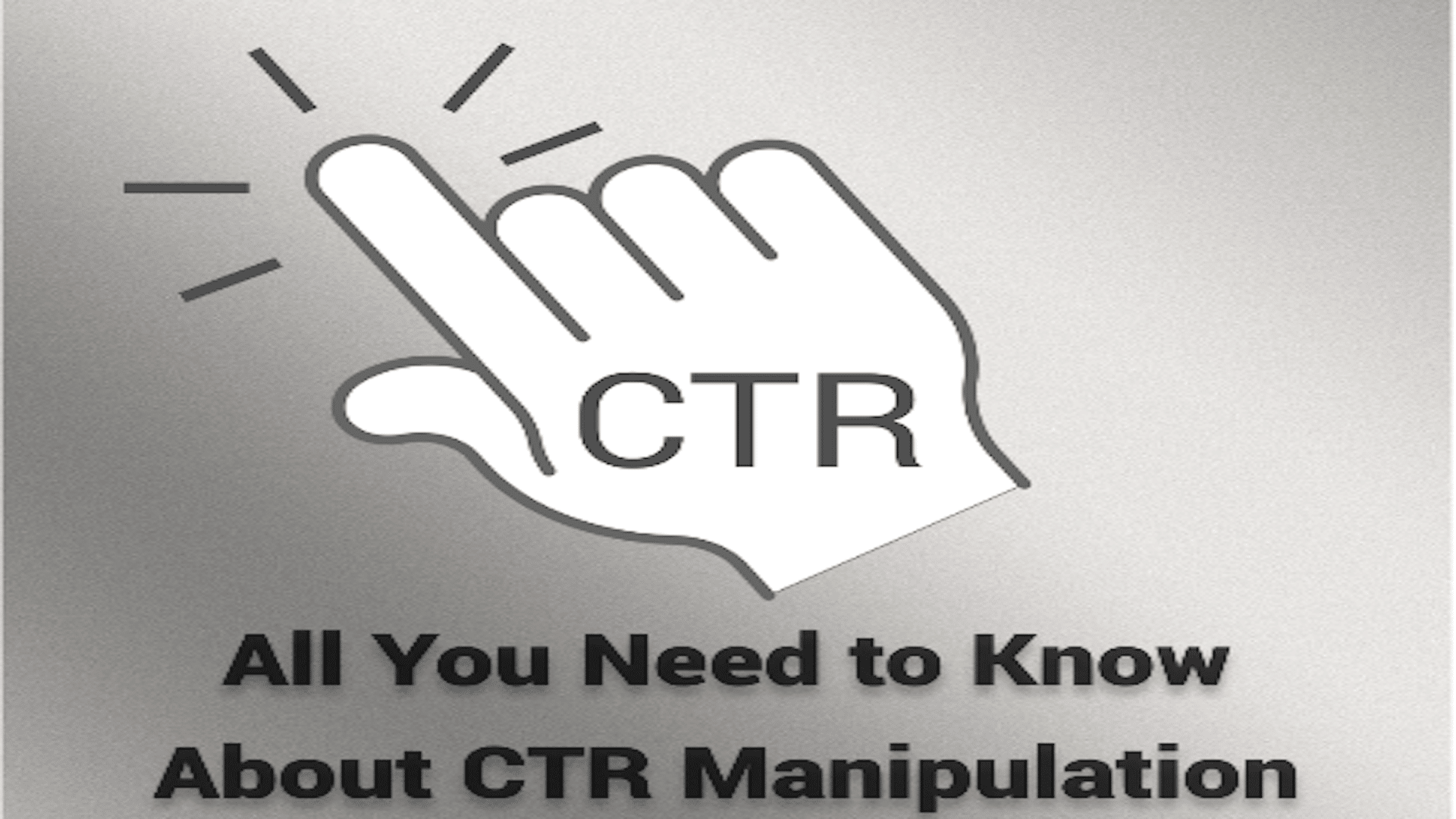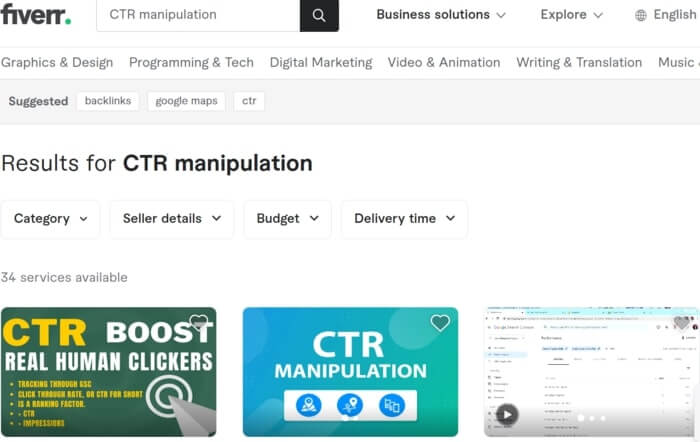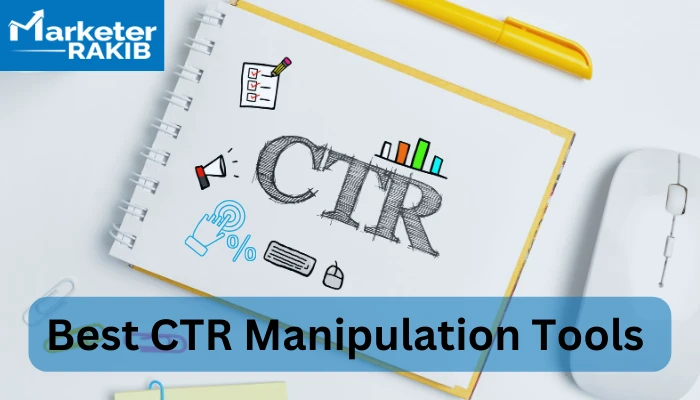Enhance Your Google My Company Listing with GMB CTR Manipulation
Wiki Article
Maximizing Organic Click-Through Fees With CTR Manipulation
The optimization of natural click-through prices (CTR) is a nuanced venture that pivots on recognizing both customer psychology and efficient web content presentation. By leveraging strategic manipulation techniques, such as powerfully crafted headings and aesthetically appealing aspects, online marketers can substantially enhance customer involvement. However, the landscape is raging with false impressions and oversimplifications concerning what truly drives CTR. As we check out the complexities of these strategies, it ends up being essential to determine the underlying principles that can cause sustained success in capturing target market attention. What really distinguishes the efficient from the ineffective in this vital facet of digital advertising?Recognizing Click-Through Rates
Recognizing click-through prices (CTR) is crucial for assessing the efficiency of internet marketing approaches. CTR determines the percent of users that click on a certain link or advertisement contrasted to the complete number of users that see it. A greater CTR indicates that the content is involving and pertinent to the target audience, while a lower CTR may indicate a requirement for optimization.To calculate CTR, separate the variety of clicks by the number of perceptions and increase by 100. For example, if an ad gets 300 clicks out of 10,000 perceptions, the CTR would be 3%. This metric is vital for evaluating numerous aspects of electronic advertising, including search engine optimization (SEARCH ENGINE OPTIMIZATION), email projects, and social media advertising.
In addition, evaluating CTR helps marketing professionals determine which approaches generate the very best results and which need refinement. By concentrating on improving CTR, companies can enhance their material's presence and effectiveness, leading to enhanced traffic and possible conversions. Understanding the subtleties of CTR is fundamental for any kind of online marketer aiming to enhance their on the internet existence and optimize return on financial investment (ROI)

The Psychology of Customer Habits
User habits is significantly influenced by mental variables that determine how people engage with on the internet web content. Recognizing these aspects is essential for optimizing click-through prices (CTR) in organic search engine result. Cognitive predispositions, such as the anchoring result, play a critical role in forming users' understandings. When users experience details, their first impressions can heavily affect their succeeding judgments regarding importance and integrity.Emotional reactions additionally substantially impact customer actions. Content that resonates emotionally can activate a sense of seriousness or interest, prompting individuals to click. Furthermore, social proof-- such as individual testimonials or ratings-- can enhance trust fund and urge engagement, as people often look to the actions of others to notify their very own decisions.
Additionally, the concept of scarcity can drive clicks - CTR Manipulation Press Release. Limited-time deals or unique material produce a fear of missing out on out (FOMO), compelling individuals to act promptly. Recognizing these psychological vehicle drivers enables marketing experts to create even more engaging content that resonates with their target market
Efficient CTR Adjustment Strategies
Leveraging mental understandings can substantially enhance click-through prices (CTR) with targeted control methods. Among one of the most effective techniques is using compelling headlines that evoke interest or necessity. Phrasing titles as concerns or incorporating numbers can bring in more focus, triggering customers to click.An additional technique includes optimizing meta summaries to produce a feeling of relevance and immediacy. By clearly laying out the advantages or solutions supplied in the material, you can engage potential visitors and persuade them to click. Additionally, utilizing power words-- such as "unique," "verified," or "cost-free"-- can boost the allure of your material.
Visual aspects likewise play a vital role. Incorporating attractive images or thumbnails can attract customers in and improve CTR. A/B screening various visuals can help identify which images reverberate best with your target market.
Finally, guaranteeing that your web content promises deliverable value leads to greater CTR. When users view that clicking will give them with significant understandings or remedies, they are most likely to engage. By using these methods attentively, marketing professionals can successfully browse around this site manipulate CTR to their advantage while keeping ethical requirements.
Common Misconceptions About CTR
A number of misconceptions surround click-through rates (CTR) that can lead marketing professionals to make misdirected decisions. One common misconception is that a higher CTR always translates to far better efficiency. While a high CTR recommends that more individuals are clicking, it does not ensure conversions or sales. Eventually, the effectiveness of web traffic depends upon the quality of the touchdown web page and the relevance of the web content.One more common idea is that CTR is a separated metric. In truth, CTR must be evaluated in combination with other efficiency indications, such as bounce price and conversion price, to acquire an alternative view of campaign success.
In addition, some online marketers assume that maximizing for CTR alone is adequate. Focusing solely on CTR can lead to clickbait methods that may bring in clicks but stop working to involve customers meaningfully. CTR Manipulation Press Release. This approach can damage brand reputation and lead to reduced retention rates
Last but not least, there is a notion that CTR strategies are widely efficient. The reality is that optimum CTR methods can vary considerably across markets and target audiences, requiring customized strategies for various market segments. Recognizing these myths is important for developing reliable CTR approaches that align with overarching advertising goals.
Measuring CTR Success
Although high click-through prices (CTR) can suggest effective involvement with web content, gauging their real success needs a comprehensive evaluation of numerous aspects. It is important to recognize the context in which the CTR is achieved. As an example, a high CTR on a deceptive title may not equate to meaningful interaction or conversions, eventually mirroring poorly on the brand name's reputation.2nd, evaluating the resource of web traffic is crucial. Organic helpful hints website traffic from online search engine can signify a durable content method, while clicks from unnecessary sources might indicate a lack of targeting. In addition, determining the subsequent individual habits is important; examining metrics such as bounce rate, time invested on page, and Home Page conversion prices can supply much deeper understandings right into the quality of the engagement initiated by the CTR.

Conclusion

The optimization of organic click-through prices (CTR) is a nuanced venture that pivots on comprehending both customer psychology and reliable content discussion. CTR gauges the percent of individuals who click on a certain link or advertisement contrasted to the complete number of individuals that view it. A higher CTR suggests that the material is engaging and pertinent to the target audience, while a lower CTR may signal a requirement for optimization.
Focusing specifically on CTR can lead to clickbait strategies that might draw in clicks however stop working to involve customers meaningfully. In addition, gauging the subsequent customer actions is vital; assessing metrics such as bounce price, time spent on web page, and conversion rates can supply deeper insights into the quality of the interaction initiated by the CTR.
Report this wiki page